Black Bear or Grizzly Bear?
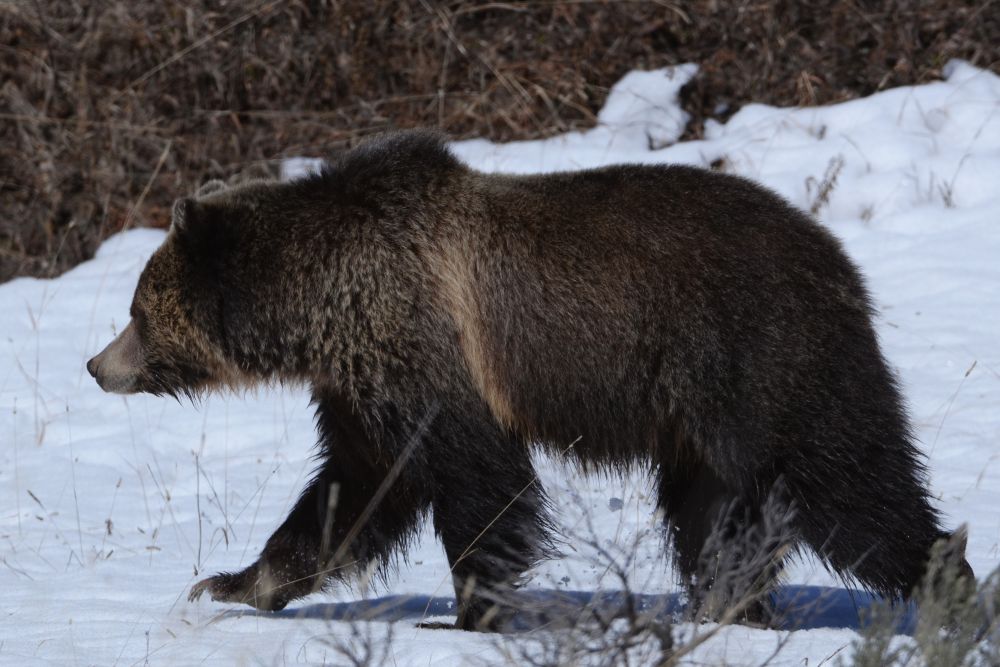
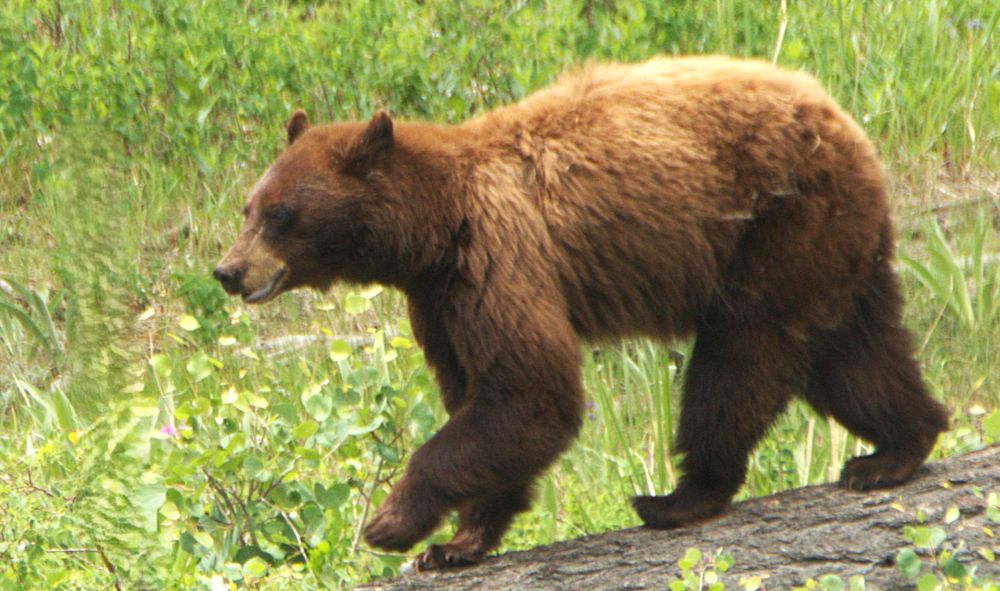
Black Bear 1 Grizzly Bear 1
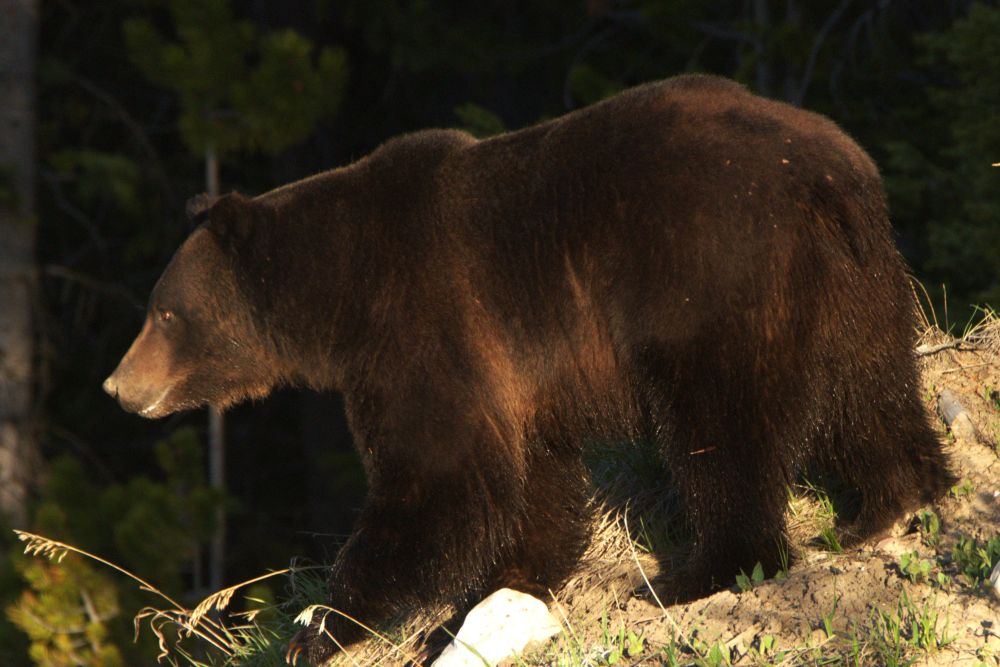
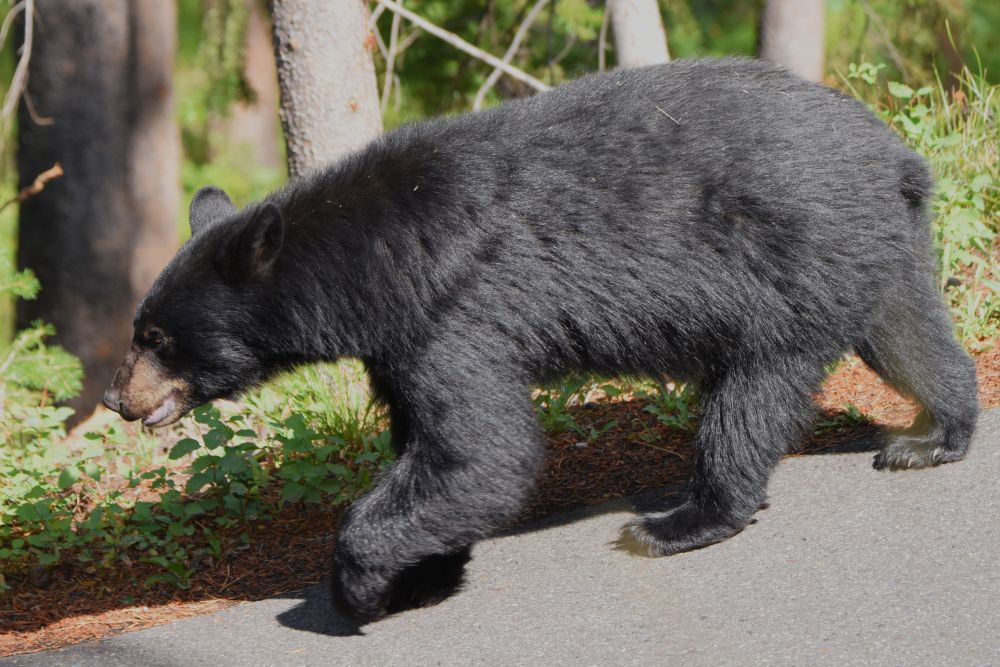
Black Bear 2 Grizzly Bear 2
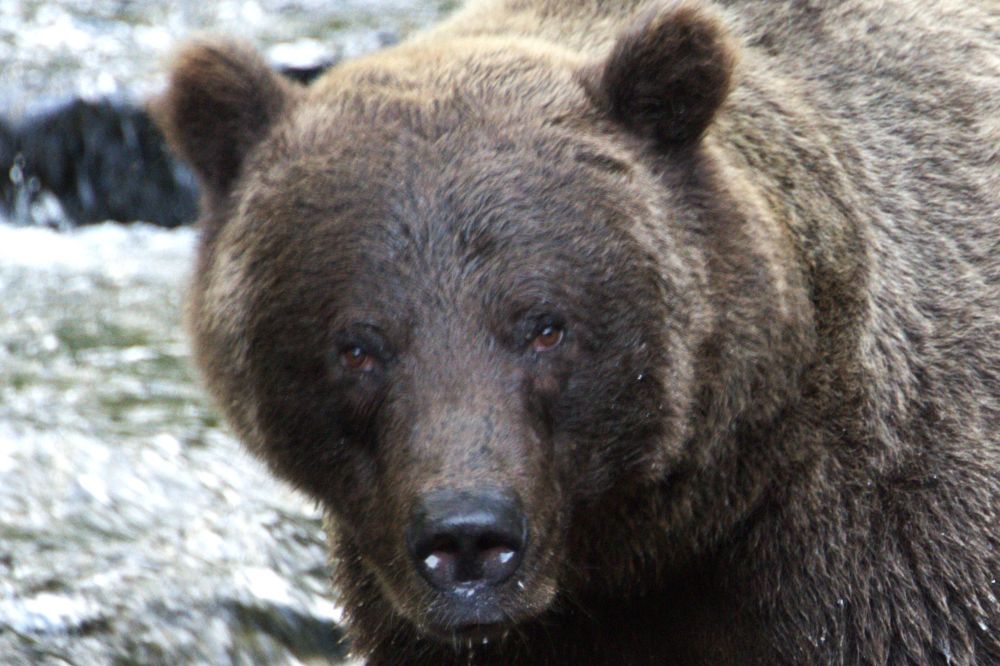
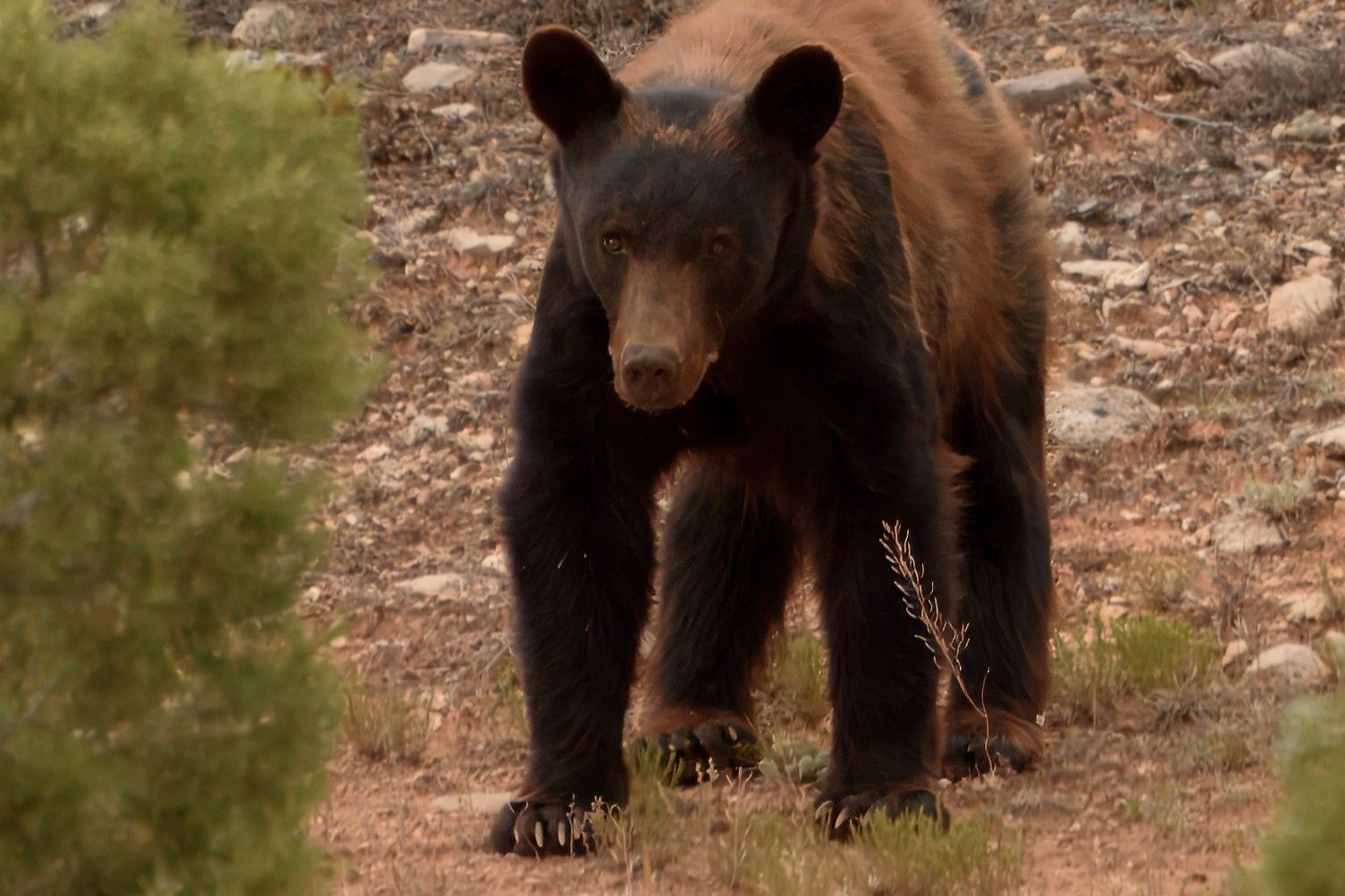
Black Bear 3 Grizzly Bear 3
In Yellowstone National Park a few years ago, I listened while a man confidently explained to his wife why a brown-phase black bear was a grizzly bear. He based most of his description on the color of the animal even though other factors were clear. I did not bother to correct him. After all, it might have been the only “grizzly” they saw that trip. Why spoil their enjoyment?
In light of the new regulation requiring a bear identification test before hunting black bears in Idaho, I began to wonder just how hard it is to distinguish the two species. Was I missing something? I took the test, reviewing the pre-test information for about five minutes first, and scored 100 percent. I am no genius, but it seemed just a little attention to detail was all that was required.
I reached out to my friend, Dr. Jeff Keay, a noted bear biologist and Island Park resident who spent years studying grizzlies in Alaska and black bears in Yosemite. I asked him what characteristics he looked for in the different species. Like the test pointed out, he started by saying that color, while often an easy delineator, is not reliable. There are light-colored black bears and very dark brown grizzly bears. The silvertips and “saddle” on some grizzlies are prominent but, he told me of one female black bear he captured in Yosemite that he named Ms. Grizz, because her dark legs and blonde torso were exactly like the grizzlies he encountered on the Tolkat Range in Alaska.
Again, just like the test, he recommended looking at a combination of features. The two most prominent and noticeable from a distance are the large shoulder hump and dish-shaped facial profile of the grizzly bear.
Jeff piqued my interest when he stated that in the field, he doubted he had ever made an incorrect identification, but that people routinely send him photos and video of bears that confound him. I can understand that, especially with a single image, because much of identification comes from watching the animal for a little while as it moves about.
Let’s look at the photos above. Claws are another distinction between grizzly and black bears. In the grizzly photo 1, the long almost straight claws on the front paw are plainly visible. This will not be the case with a black bear which has short curved claws (see black bear photo 3). In the tracks of the two, the marks of a black bear’s claws will be close to the pad marks, while those of a grizzly will be several inches in front of the pad print.
In the grizzly photo 2 above, the color of this grizzly could easily be mistaken for that of a brown black bear. Grizzly photo 1 shows a more classic grizzly coloration, but both images come from the same bear population. Black bear photo 1 shows a cinnamon-phase black bear which could be mis-identified as a grizzly (I would rather make this mistake than the reverse. If a hunter mis-identifies a black bear for a grizzly and does not shoot, no harm, no foul. The opposite mistake is much more serious).
Grizzly photo 1 clearly shows the hump and the dished face while the bear in black bear photo 2 has no hump and a straight-lined face. However, in grizzly photo 2, the dished face is harder to distinguish, but the hump is still prominent. Black bear photo 3 and grizzly bear photo 3 show the prominent ears and narrow face of a black bear compared to a grizzly. Both are young bears.
Whether you hunt bears or not, being able to identify the two species is important. I personally like to know what I am looking at. In addition, if you are wandering in the woods and see a bear, it is essential to know who your chance encounter is with as your response should vary greatly depending on species.
Help Idaho Wildlife
When we traveled across the state in October 2017, we visited most of the Idaho Department of Fish and Game wildlife management areas. Most of the vehicles we saw using the wildlife management areas did not have wildlife plates. Buying wildlife plates is a great way for non-hunters and hunters alike to support wildlife-based recreation like birding.
C'mon folks, let's help Idaho's wildlife by proudly buying and displaying a wildlife license plate on each of our vehicles!
See below for information on Idaho plates. Most states have wildlife plates so if you live outside Idaho, check with your state's wildlife department or vehicle licensing division for availability of state wildlife plates where you live.
And tell them that you heard about it from Nature-track.com!
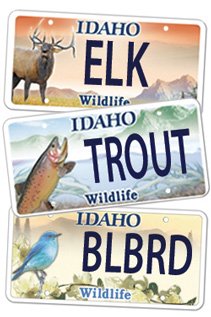
Wildlife License Plates
Great news! as of 2024, there are three NEW designs for license plates. They still are bluebird, cutthroat trout and elk, but they are beautiful.
Idaho Wildlife license plates provide essential funding that benefits the great diversity of native plants and wildlife that are not hunted, fished or trapped—over 10,000 species or 98% of Idaho’s species diversity. Game species that share the same habitats (such as elk, deer, antelope, sage-grouse, salmon, trout) also benefit from these specialty plates.
No state tax dollars are provided for wildlife diversity, conservation education and recreation programs. Neither are any revenues from the sale of hunting or fishing licenses spent on nongame species. Instead, these species depend on direct donations, federal grants, fundraising initiatives—and the Idaho Wildlife license plates.
Both my vehicles have Bluebird Plates. I prefer the bluebird because the nongame program gets 70 percent of the money from bluebird plates, but only 60 percent of the money from elk and trout plates - 10 percent of the money from elk plates supports wildlife disease monitoring and testing programs (to benefit the livestock industry) and 10 percent from cutthroat plates supports non-motorized boat access.
Incidentally, in 2014, the Idaho Legislature denied the Department of Fish and Game the ability to add new plates or even to change the name of the elk and cutthroat plates (very specific) to wildlife and fish plates, a move that would have allowed for changing images occasionally and generating more revenue. It would seem that they believe that we Idahoans don't want a well funded wildlife program.
I think it is time we let the Legislature know that Idahoan support wildlife funding and that we would like to see these generic plates come to fruition.
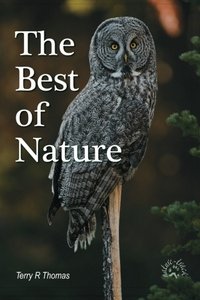
"WOW. What a phenomenal piece you wrote. You are amazing." Jennifer Jackson
That is embarrassing, but actually a fairly typical response to my nature essays. Since The Best of Nature is created from the very best of 16 years of these nature essays published weekly in the Idaho Falls Post Register (online readership 70,000), it is a fine read. It covers a wide variety of topics including humorous glimpses of nature, philosophy, natural history, and conservation. Readers praise the style, breadth of subject matter and my ability to communicate complex and emotional topics in a relaxed and understandable manner.
Everyone can find something to love in this book. From teenagers to octogenarians, from the coffee shop to the school room, these nature essays are widely read and enjoyed.
Some of the essays here are my personal favorites, others seemed to strike a chord with readers. Most have an important message or lesson that will resonate with you. They are written with a goal to simultaneously entertain and educate about the wonderful workings of nature. Some will make you laugh out loud and others will bring a tear to the eye and warm your heart.
Readers Write:
"You hit a home run with your article on, Big Questions in Nature. It should be required reading for everyone who has lost touch with nature...great job!" Joe Chapman
"We enjoyed your column, Bloom Where Planted. Some of the best writing yet. The Post Register is fortunate to have your weekly columns." Lou Griffin.
To read more and to order a copy, click here or get the Kindle version
Copies are also available at:
Post Register
Island Park Builders Supply (upstairs)
Barnes and Noble in Idaho Falls
Harriman State Park, Island Park
Museum of Idaho
Valley Books, Jackson Wyoming
Avocet Corner Bookstore, Bear River National Wildlife Refuge, Brigham City, Utah
Craters of the Moon National Monument Bookstore, Arco, Idaho